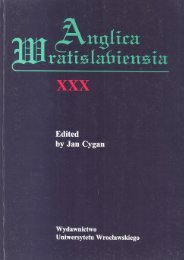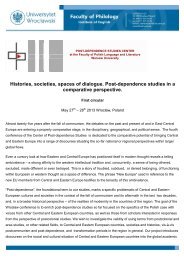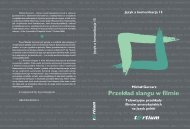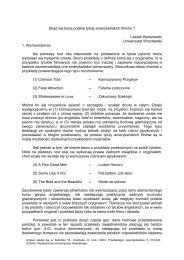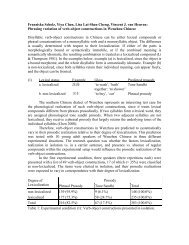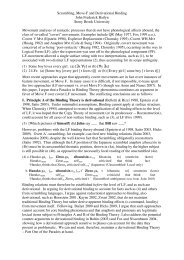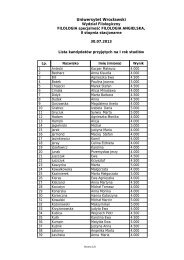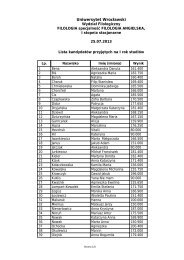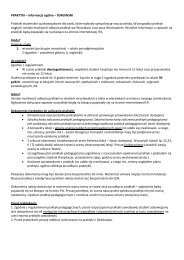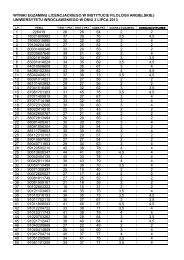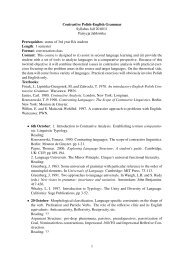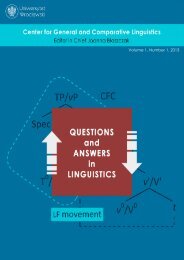Academic Journal Modern Philology
Academic Journal Modern Philology
Academic Journal Modern Philology
You also want an ePaper? Increase the reach of your titles
YUMPU automatically turns print PDFs into web optimized ePapers that Google loves.
Non-formal Elements in <strong>Academic</strong> Translator Education<br />
the whole spectrum of the education and learning lifespan. This revolution recognises the changed<br />
world in which we live. A world in which: information is readily and easily accessible; where change<br />
is so rapid that traditional methods of training and education are totally inadequate; discipline<br />
based knowledge is inappropriate to prepare for living in modern communities and workplaces;<br />
learning is increasingly aligned with what we do; modern organisational structures require flexible<br />
learning practices; and there is a need for immediacy of learning. In response to this environment<br />
there have emerged some innovative approaches that address the deficiencies of the pedagogical and<br />
andragogical methods.<br />
In other words, if education is to help the learner meet the demands of the contemporary world,<br />
it must seek paths towards heutagogy. There is yet another distinction between the andragogical and the<br />
heutagogical approach that Hase and Kenyon (2000: 5) reveal:<br />
Knowles’ definition [of self-directed learning – KK] provides a linear approach to learning and<br />
sounds a little like the chapters of a train the trainer guide. Heutagogy takes account of intuition and<br />
concepts such as ‘double loop learning’ that are not linear and not necessarily planned. It may well be<br />
that a person does not identify a learning need at all but identifies the potential to learn from a novel<br />
experience as a matter of course and recognises that opportunity to reflect on what has happened<br />
and see how it challenges, disconfirms or supports existing values and assumptions.<br />
Hence, learning cannot be limited to the formal educational context, as a lot of learning happens<br />
out of that context, even if it is inspired by what goes on in the formal curriculum. In this way, our debate<br />
on students’ autonomy and ways of understanding it leads us to the distinction between the formal and<br />
non-formal education and styles of learning.<br />
37<br />
Informal and non-formal education<br />
The concepts of formal, informal and non-formal education require some preliminary comments.<br />
Coombs, Prosser and Ahmed (1973) defined the three concepts as distinct but related. The relation may<br />
be presented graphically in the following way:<br />
formal learning<br />
• institutionalized<br />
• hierarchical<br />
• chronologically ordered<br />
non-formal learning<br />
• organized educational<br />
activity outside the<br />
forma curriculum<br />
informal learning<br />
• life long proces<br />
• individual develops<br />
knowledge, skills and<br />
attitudes<br />
• based on daily experience,<br />
educative influences and<br />
social environment<br />
Figure 1. Formal, informal and non-formal learning (on the basis of Coombs, Prosser and Ahmed 1973).



